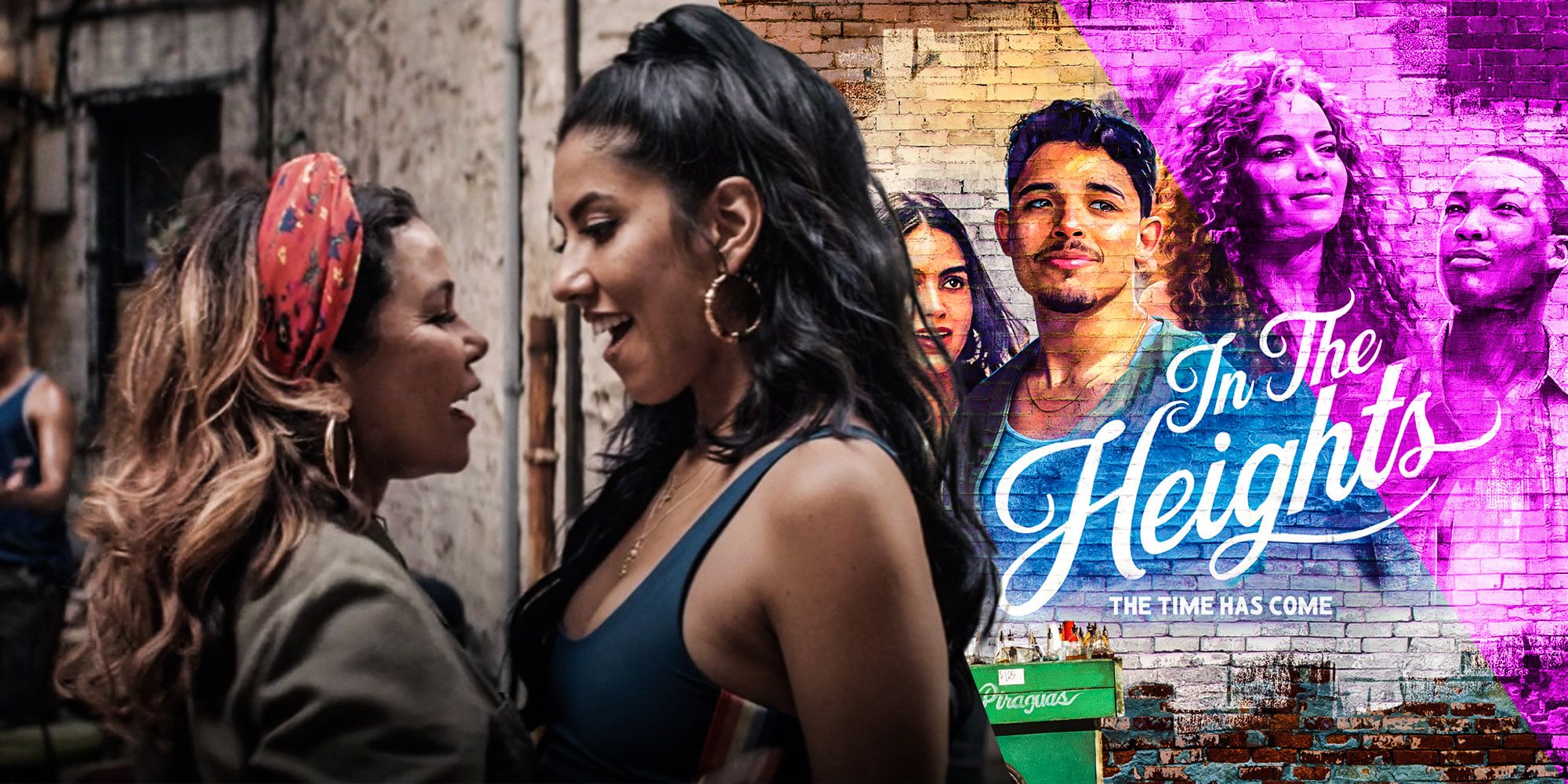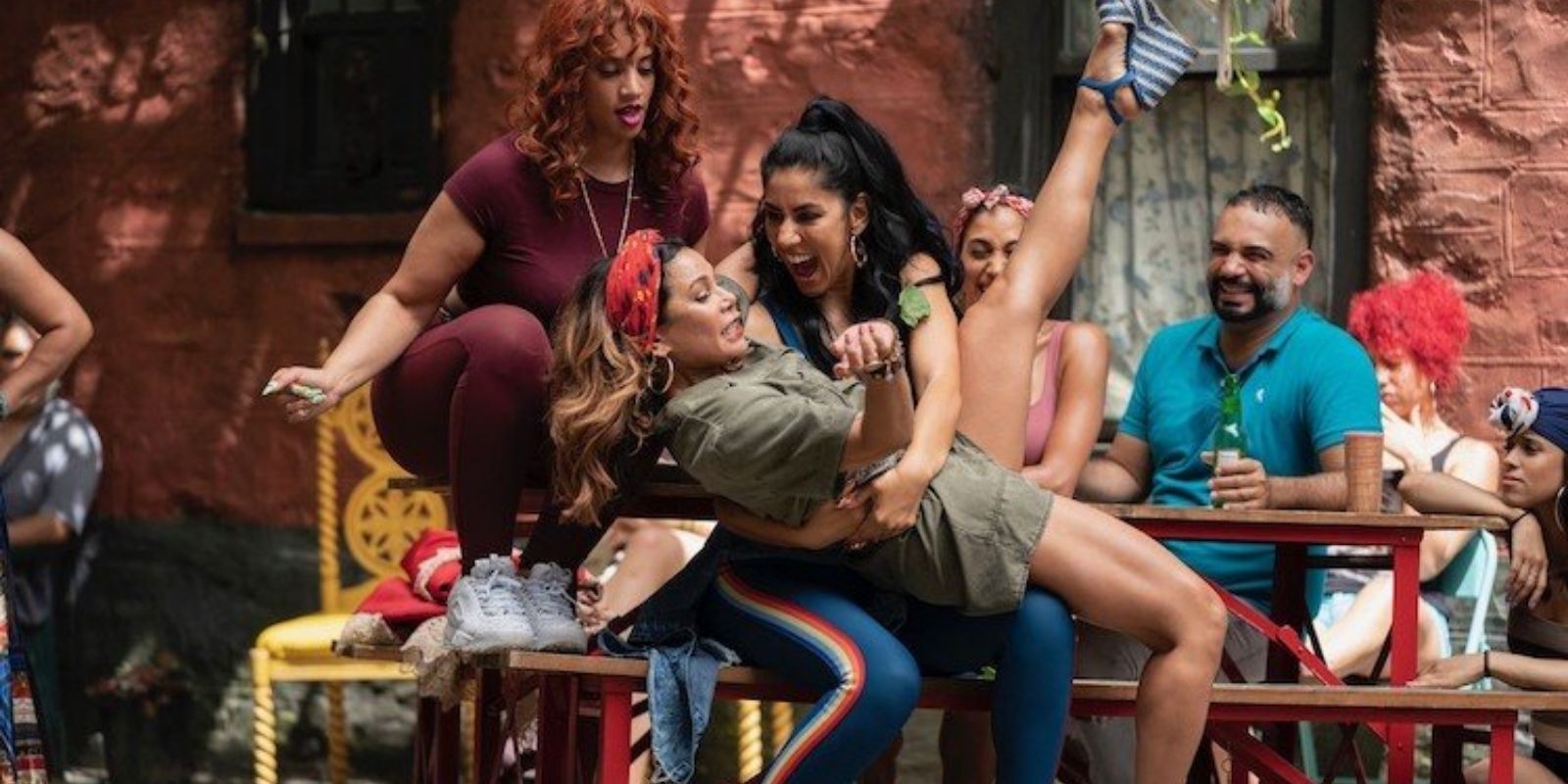
In In The Heights, Carla works for Daniela at her salon in Washington Heights, but the movie adaptation of Lin-Manuel Miranda’s Broadway hit musical puts a new spin on their relationship. While the differences between the two iterations of the characters might appear minor in comparison to some of the larger changes made in the adaptation, they are crucial to the larger efforts to update the musical for a 2021 release.
In The Heights always tackled large social issues surrounding community and gentrification. Daniela’s salon is presented as one of the symbols of this as she is priced out of the neighborhood and has to relocate away from her customer base. But the adaptation has sought to approach other cultural problems, most notably through the introduction of a plot about DACA and undocumented immigrants.
In the original musical, Carla is primarily a backup to Daniela’s larger presence, merely credited in the libretto as “works at the salon.” She tends to support Daniela in conversations and joins her in gossip about “who's doin' who and why.” But the movie gives them an explicit romantic entanglement. From the opening scenes, we see Daniela, portrayed by Daphne Rubin-Vega (famous for originating the on-stage character of Mimi in Rent), woken up by a kiss on the cheek from Carla, portrayed by Stephanie Beatriz (who came out as bisexual in 2018), as she gets out of bed. Despite the overtly physical nature of the relationship throughout the movie, with them spending time in each other’s laps, embracing, and Carla brushing off a male dancer who seems enamored with Daniela, their partnership is not a big deal. Other characters do not comment on the relationship, and only before Carnaval del Barrio do we see an apparent change to the text relating to their relationship as Carla refers to Daniela as “mi amor.”

The incidental nature of this relationship is part of a push for wider acceptance of LGBTQ+ representation as normal. Rubin-Vega said of the relationship (via Advocate) that “We [Daniela and Carla] love each other … [it’s] ordinary, not extraordinary.” She also noted that including this element, along with the other social issues, was part of working against cultural assumptions that have stood for too long, saying stories can be used to ask “What other way are we going to address the structural oppression that has been perpetrated? How are we going to move it?”
Similarly, Beatriz has said (via PlayBill) “What was so gratifying to me as a person who is queer is to see this relationship in the film be part of the fabric of the community, and to be normal, and be happy and functioning, and part of the quilt they’ve all created […] So much of this film is about where home is and who home is to you. And for Carla, Daniela is home. Wherever Daniela is, that’s where Carla feels at home.” Essentially: including this additional representation makes perfect sense in In The Heights as the musical has always sought to push against larger systems of oppression and bring together disparate groups.
Next: Every In The Heights Song Not In The Movie
from ScreenRant - Feed https://ift.tt/3wMkFvx
https://ift.tt/3xAkW4Q
Comments
Post a Comment